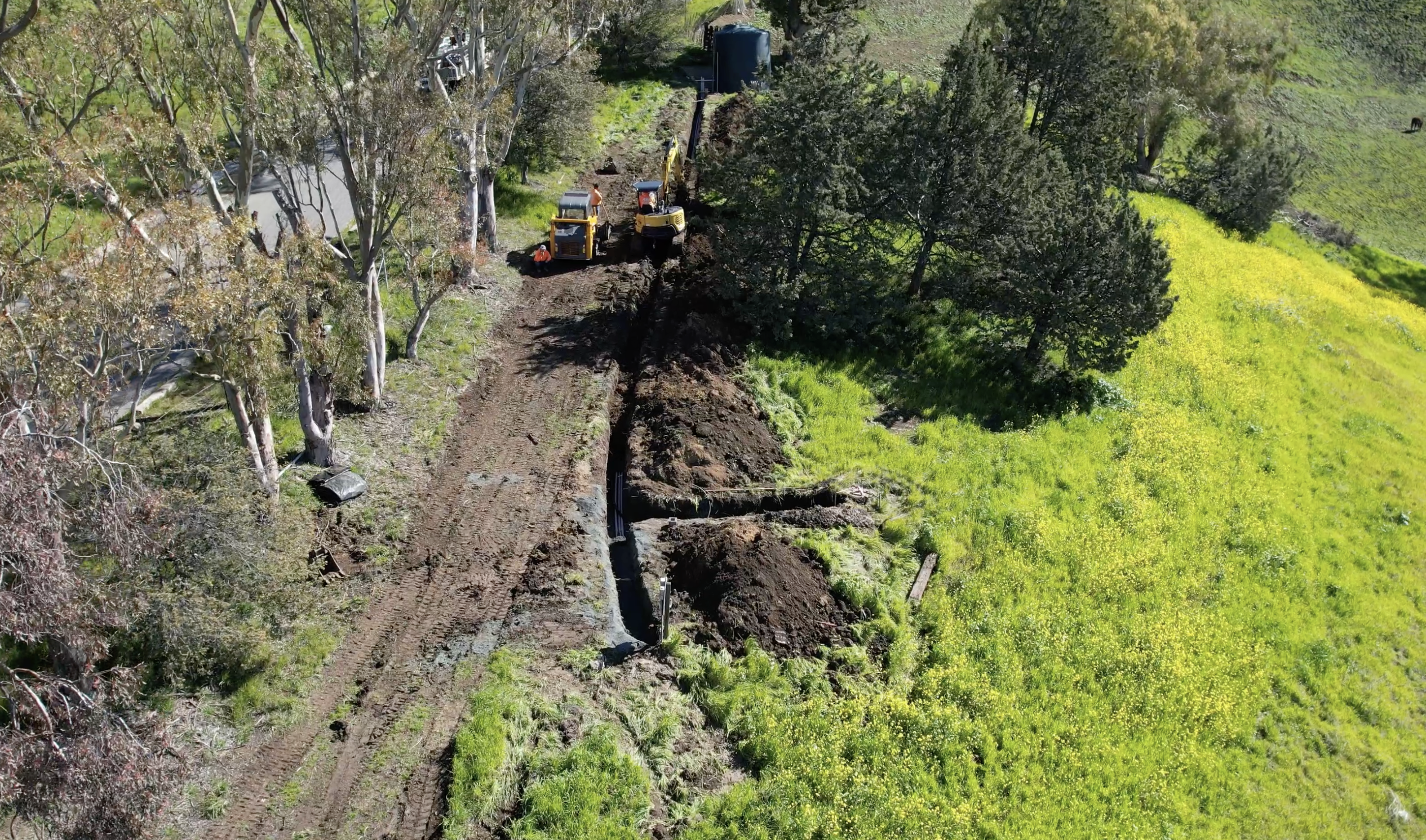After the trench was dug and filled back in, we could fill the well tank only by flipping the breaker in the garage to turn on the pump at the head; the float switch couldn’t be used as new power lines had not been run through the new conduit. We thus had no way of knowing how much water was in the tank, unless one of us went up the hill and banged on the tank to figure out the approximate water level.
If you read the last post, you will remember the lovely riser support our plumbing outfit built for the fill pipe. That riser can also serve as a ladder for short people like Stega. A ten-thousand gallon water tank like ours is about eighteen feet tall, so the midpoint is at roughly nine feet. So to make sure we were closest to full, I would have to climb the riser and knock on the tank. The knock sounds different above or below the water line. Another useful tool was listening to the sound of the water from the fill pipe as it spilled into the tank.
I mention these little details because for almost a year, making sure the well did not fall below five thousand gallons became my daily obsession. In the fall of 2023 though, Agent Smith, who originally intended to build our own control unit, found a product that fits our needs and sorta, kinda works. While their development is stunted and their customer service blows monkey chunks, we do have a float sensor that talks to a controller on the board that tells us what the water level is via a little LCD display in the kitchen. It can also pump if the level falls below a certain level, and we can tell it not to pump at night–a key thing when you are trying to not pull from the grid or deplete the battery backup. But we have no visibility into stats like amount used vs. pumped, gallons per minute pumped, etc. And as mentioned, their customer service is awful. We sent them a list of bugs/issues with their software and they basically told us to sod off. We’re currently looking for other options.
So while quite a large project, the end result should prevent some future issues. We will at some point need to do the same sort of thing for the run between the house and junction behind the garage, but for now things are back to normal.
Here’s an aerial shot of the trench:

And then a shot of the track between the head and tank….you cannot even tell we recently ripped it all apart:







